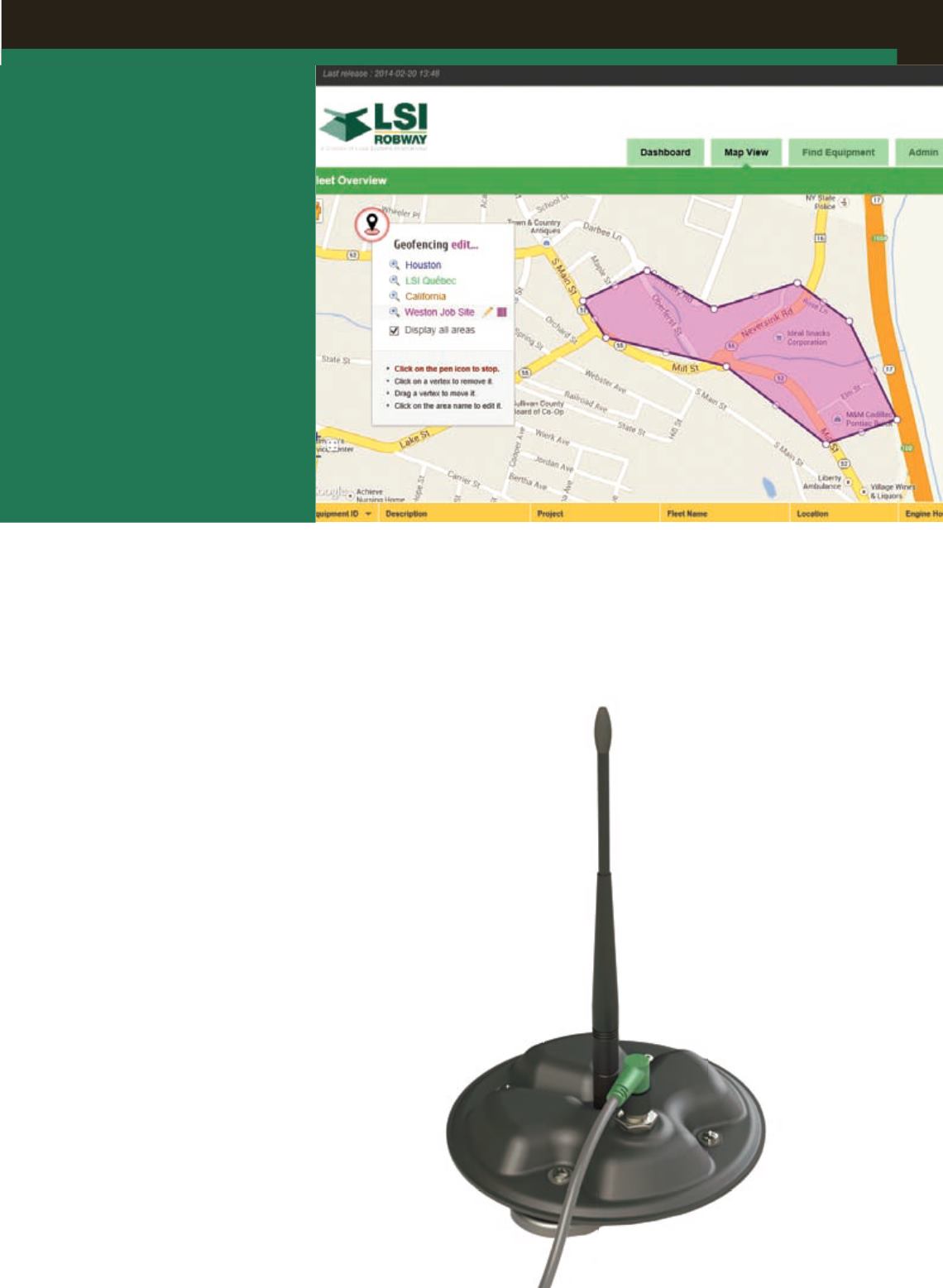
43
TELEMATICS
TECHNOLOGYUPDATE
APRIL 2014
ACT
Dave Smith
discusses
the pros and cons,
(mostly pros), of crane
and heavy equipment
telematics systems.
Telematics primer
I
n today’s technologyworld,
information is king.Withdetailed
and accuratedata, crane owners, fleet
managers and even crane operators can
benefit from access to this information.
Welcome to the ever-evolvingworldof
telematics. If you are likemanypeople,
telematics is aword that youhave likely
heard, butmaynot understand exactly
what it is or how you canbenefit from its
use.
Wikipediadescribes telematics as “…
an interdisciplinary field encompassing
telecommunications, vehicular
technologies, road transportation,
road safety, electrical engineering
(sensors, instrumentation, wireless
communications, etc.) [and] computer
science (multimedia, Internet, etc.).”
The black box
With a telematics system, you can see
where your equipment (or the gear you
use tohaul or support your equipment)
is located. You canmonitor engine
hours, location and speed.With some
systems you can checkkeymaintenance
indicators such as temperatures and
pressures ormonitorwhichoperator is
running the equipment andother data.
Somemight be asking, “Howdoes it
work?”Essentially, a “blackbox” device
is installedon the equipment.Most base
through a cloud application.
For example, say that I have a crane
working in front ofHoustonCityHall
and Iwant toknow if the crane goes
outside of a two-mile radius of theCity
Hall.With themapping feature ofmy
telematics software I createmy geo-fence,
which Iwould typicallydrawwithmy
PCmouse.Oncemy geo-fence is active
I can set up anotification, often via a
textmessage tomy cell phone or email,
tonotifyme thatmy crane or piece
of equipment has gone outside of the
definedwork zone. Itwill typicallybe
recorded as an event inmy telematics
provider’s database.
As standard,most systemswill tell you
your engine run-timehours andGPS.
Increasinglymore common, systems
coming into themarketwill offer the
ability to connect to the equipment’s
J1939orOBDIICANdata, opening
up the opportunity to
LSI-Robway is
developing a
telematics
system that
will be rolled
out in the near
future. Pictured is
the LSI Robway Radio
Worksitemodem.
versionunits feature as standard aGPS
chip, cellularmodem card and a couple
of inputs. The cell phone chip is used to
communicatedata from the equipment
back to thehost database. Therewill
bemonthly service fees for the cell
phoneusage to communicate thedata
from the equipment to the remote
database. Someproviders bundle the
cell charges into their software and
provide youwith amonthlybill for the
carrier charges, while others require
you toprovide your own cell phone
dataplan. Several systems alsooffer
communicationusing a satellite link
tomove thedata from the equipment
to thedatabase. This is popularwhere
cell coverage is not available.
Most telematics systems offer the
ability to establish a geo-fence around
the equipment. A geo-fence allows
theuser to set anoperational
boundary around the
piece of equipment,
which can
bemulti-
dimensional
in shape.
Geo-fences
are typically
set up from a
desktop application
or online, increasingly
Most telematics systems offer the
ability to establish a geo-fence around
the equipment, allowing the user to
set an operational boundary around
the piece of equipment, which can be
multi-dimensional in shape. Geo-fences
are typically set up from a desktop
application or online, increasingly
through a cloud application.


